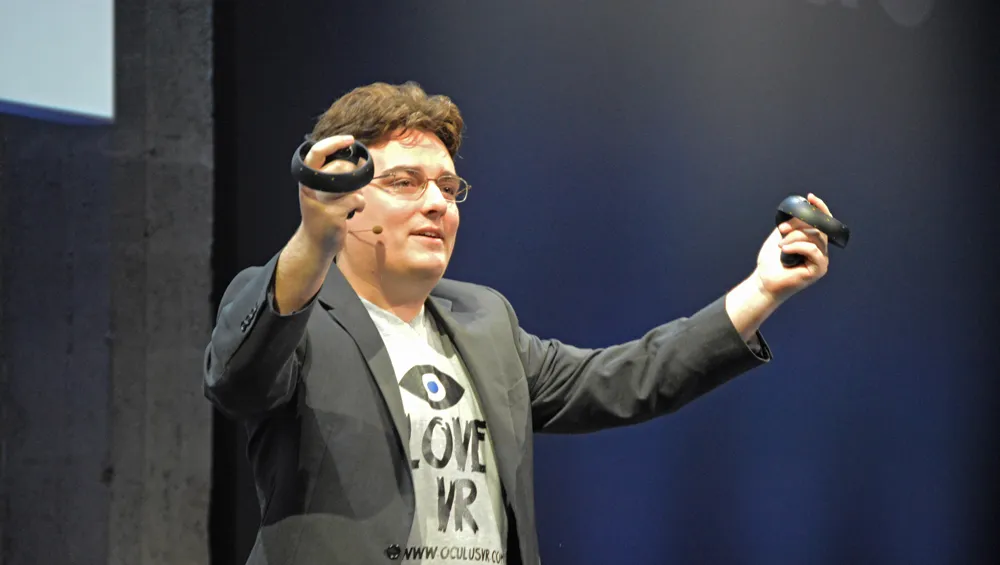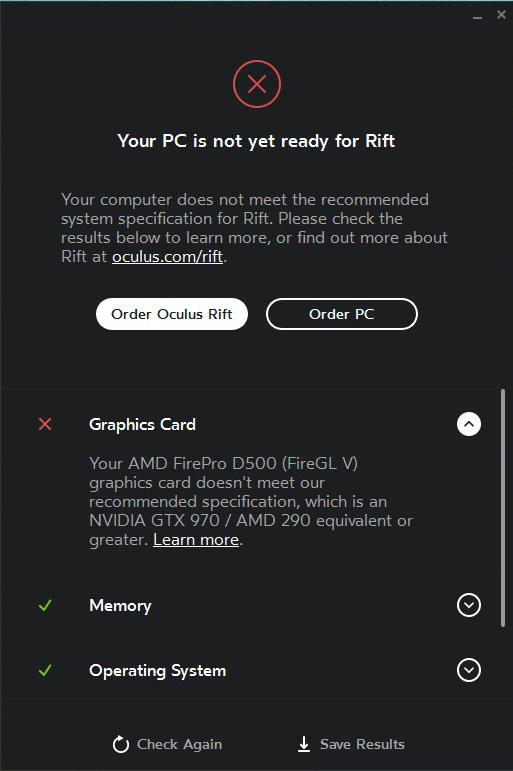Oculus founder and VR pioneer, Palmer Luckey shook the internet into a mini-frenzy by bluntly stating that the reason his company’s Rift VR headset isn’t compatible with Apple computers is due to the underpowered nature of those machines.
In a recent interview with Shacknews, Luckey issued a series of statements explaining the issue.
“It just boils down to the fact that Apple doesn’t prioritize high-end GPUs. You can buy a $6,000 Mac Pro with the top-of-the-line AMD FirePro D700, and it still doesn’t match our recommended specs…So if they prioritize higher-end GPUs like they used to for a while back in the day, we’d love to support Mac. But right now, there’s just not a single machine out there that supports it. Even if we can support on the software side, there’s just no audience that could run the vast majority of software on it.”
When Luckey was asked specifically if his company would ever consider releasing a version of the Rift that is compatible with Apple systems his response was to say, “[that] is up to Apple…if they ever release a good computer, we will do it.”
Luckey took to Twitter later to clarify he uses a MacBook Pro and doesn’t dislike Apple, it’s just a problem with the graphics power inside the machines not being ready for VR.
Apple makes solid computers, and they are the best hope we have for driving electronics manufacturing back to America in the long run.
— Palmer Luckey (@PalmerLuckey) March 4, 2016
Oculus initially mentioned its intent to support Apple products during its development phase. However, that changed in May of 2015 when Oculus’ software architect Atman Binstock explained that Apple integration would be, “paused in order to focus on delivering a high quality consumer-level VR experience at launch across hardware, software, and content on Windows. We want to get back to development for OS X and Linux, but we don’t have a timeline.”
The rejection of the Mac as a viable platform for the Rift by Oculus has left some Mac-owning early adopters scratching their heads. The Rift is not compatible with Apple’s OSX operating system, but many Mac users have discovered the ability to “dual boot” their computers into Windows. However, according to some reports, this process creates a noticeable dropoff in performance.
Operating systems aside, the main issue, according to Palmer’s quote, is that the graphics card (AMD FirePro D700) that can be found in high-end Macs is not up to snuff of the recommended Oculus-ready graphics cards (NVIDIA GTX 970/AMD 290 or greater). However, some Mac Pro users claim that their onboard graphics cards are on par or better than the “recommended” selections from Oculus.
One frustrated user posted the above picture onto an Apple discussion thread accompanied by the following text: “Finally the Oculus Rift is available for pre-order. The people from Oculus provided a Rift compatibility tool for Windows to find out if your PC is compatible. I ran this tool in Bootcamp, on Windows 10 and it appears the pro-level AMD FirePro D500 in my expensive Mac Pro (late 2013) don’t meet the Rift’s recommended specification.”
In response, another poster followed up by writing, “the FirePro D500 is more powerful than a R9 290 and you even have two of them in a new Mac Pro. As this model card is a special Apple only version Oculus have clearly overlooked its suitability.”
The agitated Apple owners don’t agree that their machines are incapable of running the Rift, and wonder why the word “recommended” for Oculus has suddenly come to mean “required.”
A final poster to the Apple message board summed up that sentiment by writing, “These are ‘recommended’ specs, right? Am I missing something where it simply won’t function at all without the correct hardware? The dual D500s (and frankly even the dual D300s) should have enough horsepower to run the Rift. So why the sense that all is lost? It may not be on their “list,” but I don’t think that means it’s not powerful enough to run the Rift. Am I missing something here?”
Apple is no longer a supported platform for the Rift SDK, and so we’ll just have to wait until someone tries plugging in a consumer Rift to a Mac Pro to settle for sure whether any Apple computers can work with this particular VR device.




























